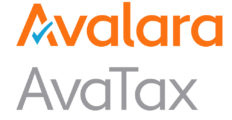SaaS influencer marketing allows you to increase visibility and move faster through your sales funnel. Influencers are more trustworthy than traditional branded content, and most of their followers purchase according to their recommendations.
Therefore, influencer marketing gives you access to a wide and captive audience who will not ignore your messages as they do with branded content.
That’s your gateway to increased sales and expanding your company.
Of course, you must follow a set of best practices to achieve your influencer marketing campaign’s goals. And you also need the right tools to streamline influencer sourcing, communication, and execution.
Read the guide below for actionable advice on all those matters, along with excellent examples to draw inspiration from.

Why Use SaaS Influencer Marketing?
- 93% of marketers have already used influencer marketing, which means it’s an effective tactic.
- The average profit is $5.20 for each $1 spent on influencer marketing.
- 61% of customers trust influencers.
- 80% of people who follow content creators purchase according to their recommendations.
- The share of consumers who follow at least one influencer is:
- 75%: 18-24 years old
- 67%: For people aged 25 to 34 and 35 to 44
- 51%: People aged 45 to 54
Influencer marketing works for SaaS products mainly because the SaaS audience is the one that follows influencers the most. And the majority of influencer followers also act according to their recommendations.
With that in mind, let’s see how you can leverage influencer marketing to your advantage:
30 Best Practices for SaaS Influencer Marketing
Running an influencer marketing campaign is similar to conducting a regular marketing campaign because it follows mostly the same steps. The difference stems from the best practices associated with each of these phases.
We will review them below:
Set Your Goals
Although studies show that 86% of marketers want to increase awareness through influencer campaigns, you shouldn’t view this as a limit.
Other goals include:
- Increasing traffic to your website
- Lead generation
- Increasing sales
- Increasing social media followers
- Creating more engagement
- Building your reputation
Best practices include:
- Audit your company, services, and communication history to understand the logical goal you need to set.
- Split that goal into several objectives, each with its key performance indicators (KPIs), to make progress tracking easier.
- Create influencer personas to understand which content creator would better suit these intermediate objectives and the overall marketing goal.
The best tools for the job include:
- Planning and calendar software to organize these objectives
- Communication software like Slack to facilitate interactions and the chain of command in your marketing team
Here’s one neat example:
Grammarly didn’t understand the power of TikTok until a student accidentally became famous for launching a viral dance using Grammarly’s YouTube jingle. That one move brought the student, Ari Pine, 50,000 new followers in 72 hours.
@aripine Day 2 of this dance 😀🥰⚠️ keep on learning & tagging me! As requested, I changed the end a lil ;) #fyp #fy #dance ♬ original sound – dr. feelokay
Grammarly’s marketing team decided to use this opportunity to increase people’s interest in the software. And this one trend indeed raised people’s interest by 481% times.
That’s when Grammarly decided to hire Ari Pine as an influencer and start leveraging the power of TikTok.
Determine Your Audience
As with any marketing campaign, the second stage is usually understanding your audience. This phase entails creating buyer personas based on socio-demographic factors. After all, you can’t choose the right influencers if you don’t know who to address first.
The best practices to follow during this stage include:
- Use interviews, surveys, and data analytics to help you understand your target and their interests.
- Audit your current customers and their shopping preferences.
- Audit your social media, e-mails, and all communication between you and potential leads to extract specific insights into their interests.
- Conduct competitor research to see if there is any audience overlap and to analyze the communication between them.
- Comb through social media channels to see what content makes your audience tick and what makes them irresponsive.
- Review the content creators your audience predominantly interacts with.
- Understand the social media channels your audience favors.
The tools you will need for the job include:
- Tools to help you sleuth out the social media most likely used by your customers, such as Buffer
- Social media listening tools to gain valuable insights and improve your SaaS influencer strategy
- Software that helps you organize the information you find
Source Your Influencers
You could say that influencers are like channels for your message because they convey what you have to say.
Now, imagine reading one message in a tabloid and then reading it in a financial magazine. What publication would you trust most?
It’s the same with content creators; your audience needs to trust them. Finding relevant, expert influencers is even more important for SaaS products than other things, like food or fashion.
Best practices include:
- Consider your influencers’ reach. A content creator with a wider audience may be better for increasing your visibility and notoriety. However, nano-influencers have the highest engagement rates, reaching an average of 4.8% on Instagram and 12.43% on TikTok. The result is generating more quality leads and getting more sales.
- Check if your influencer is relevant to your audience. Make sure their expertise aligns with your industry and your audience’s interests. You will also have to consider the content creators’ values and the usual topics they cover. Finding the perfect marriage between ambassadors and your product requires brand governance.
- Ensure your audience resonates with your creators. This step entails checking your creators’ engagement levels and analyzing variables such as likes, shares, and comments. Look at the types of comments these people are getting to ensure they have quality, tight-knit interactions with your audience. The most engaged influencers are also the most persuasive.
Tools you need for the job are:
- A high-quality influencer discovery platform: You want to make influencer discovery as precise as possible, so look for platforms with highly specific filters. You can also use Google’s advanced search operators or Instagram and Twitter searches to source relevant influencers in your niche.
- An engagement rate calculator for all the platforms you are using: A thorough calculator will show you different variables, such as the average number of likes and comments. You will also see the number of followers, plus the comments and likes per post.
- A fake follower checker: Unfortunately, many so-called influencers buy bot accounts to get more contracts. A fake follower checker will show you how many real followers an influencer has, outlining an overall audience score.
Canva offers another neat example, hiring Guy Kawasaki, former Chief Evangelist of Apple, as a brand ambassador. Canva aims to democratize design, making it affordable for everyone, and Guy is the perfect ambassador for that mission as he explains himself:
Note: Guy has become a brand ambassador for Canva, mainly because Canva’s goal was to reposition itself as a brand that democratizes design. This sort of goal is not only long-term but also requires intense work.
Decide the Right Type of Content
The right type of content depends on all the factors we discussed above: your goals, audience, and influencers. Once you know all these things, you will know which platforms to use – whether Twitter, LinkedIn, or even TikTok.
Consequently, you will know which messages are best, from blog content to influencer-generated reviews or even podcasts, depending on your target audience..
Best practices include:
- Ensure your content is relevant and exciting for your audience.
- Ensure your influencers are well-versed in producing that type of content.
- Ensure the message’s format and topic fit your SaaS product.
- Adapt the messages to the social platforms you are using.
- Create content that your audience is excited about sharing.
- Include relevant calls-to-action (CTAs), so your audience understands what is expected of them.
- Keep your messages straightforward and engaging to fight people’s ever-decreasing attention spans.
Slack offers a good example because it decided to publish an interview with influencer Mandy Ansari on its own website instead of sponsoring one of her posts. As such:
- People can read a more in-depth and real-life story about the benefits of using Slack.
- Slack can edit and curate this content on its own turf.

Note: This type of long content has the added advantage of qualifying leads – only interested people will stay tuned until the end. As such, it may not be appropriate for the awareness stage in the customer decision-making process.
Tools you need for this stage of your influencer campaign include:
- Software for keyword research, such as AdWords
- Social media collaboration tools that facilitate communication inside your marketing team, such as SocialPilot. These tools should allow seamless message feedback and approval, streamlining internal communications.
- Mockup ad generators that allow you to build and test different types of messages before picking one
Define and Manage Your Influencer Relationship
Your relationship with your influencers depends on the type of campaign you’re creating and its goals. For example:
- You can sponsor one-off posts from multiple influencers to make a quick buzz around your products.
- If you want to build your reputation and engagement, you will likely consider a longer-term relationship with several brand ambassadors.
And don’t forget that you will have to contact those creators before anything happens.
Here are some best practices to consider:
- Approach your potential influencers politely, using a personalized message and highlighting why you want to work with them.
- Ensure you are clear about your goals and expectations.
- Use an influencer agreement to make everything legal.
- Manage your relationship using incentives or gamification, depending on the type of campaign you have.
- Gamification works better if you have multiple influencers, each with discount codes for your products.
- Incentives like team building, access to exclusive events, and asking for feedback work best for long-term ambassadors.
The best tools for the job include:
- CRM software to manage your communication
- A gamification software
Set Your Budget
Setting your budget can happen earlier or later in your influencer marketing plan, depending on your finances.
- If you decide on other factors first, like the type of messages and influencers, you will be able to define a more precise sum.
- But if you set your budget first and try to make the other elements fit, your influencer marketing campaign may be less effective.
Best practices include:
- Set the type of payment options that best fit your influencers and the kind of campaign you are creating. For example:
- Certain influencers may refuse payment altogether if they feel they have an emotional stake in an awareness campaign.
- Influencer campaigns to increase sales via affiliate links require you to give a percentage of the sales to your content creators.
- Product seeding campaigns require you to send products to your content creators instead of or along with other payment.
- Some campaigns allow you to pay influencers for each post they make or at the end of their contract.
- Be upfront about your budget and payment type with your influencers.
- Include the budget and payment conditions in your contract.
Tools that could be useful include:
- Collaboration cost calculators to estimate your budget more precisely
- Automation software for performance tracking
- Accounting software that allows you to track all types of payments made across influencers
Here’s one example:
Microsoft states that it doesn’t pay its influencers to keep the authenticity of their recommendations. One of those influencers is Nat Geo photographer Stephen Alvarez who frequently uses Windows-operating products like Lumia 930 smartphones.
However, Microsoft uses the content created by Stephen Alvarez to get the ball rolling with hashtag contests on their social media:

Monitor Campaign Results and Adjust Accordingly
The last step in your process is measuring your campaign results to see if your marketing efforts were successful. This allows you to adjust your campaign accordingly, according to the metrics.
Best practices include:
- Check that your KPIs have been achieved using UTM links and personalized codes for each influencer.
- Keep in close contact with your influencers to ensure they meet their goals.
- Ask for feedback from your content creators.
The tools you need include:
- Analytics tools to track metrics
- ROI marketing calculator to assess the profit
- Report-generating software that helps you organize the results and extract relevant insights from it
- Communication tools to discuss these results and set up another potential campaign
Starting Your SaaS Influencer Campaign
As you can see, working with influencers can bring many benefits to your SaaS company. And you don’t have to be the tally of Grammarly, Microsoft, or Canva to kickstart your campaign. But you can – and you should – follow their example to create an effective influencer plan.
Remember to follow the best practices outlined above and use the right tools to help you along the way. You need to track your plan, check your influencers’ backgrounds, and streamline communication. If you can do all that, you will be well on your way to influencer marketing success.



























Leave a comment!